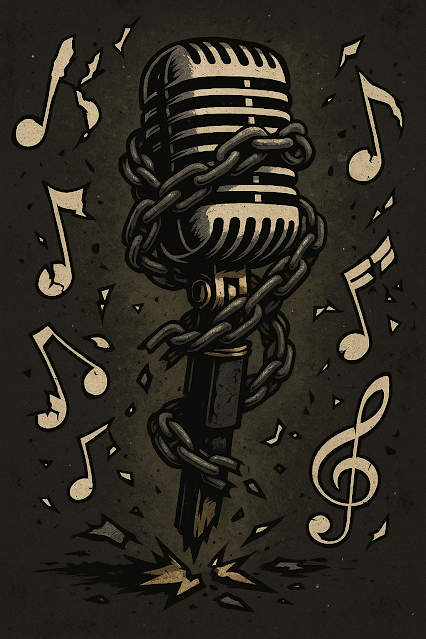Authoritarian Drift at DOJ: Democracy Docket's Warning and the Expanding Evidence
Authoritarian Drift at DOJ: Democracy Docket's Warning and the Expanding Evidence
By [ProjectFactz]
An expansion on reporting from Democracy Docket
1. Echoes from the Edge
Democracy Docket's May 7th newsletter, penned by senior reporter Matt Cohen, reads like a warning flare launched from within the administrative machinery of the U.S. Department of Justice (DOJ). Rather than merely report on dysfunction, it offers a frontline account of an institutional shift: the slow, deliberate transformation of the DOJ's civil rights division into a weaponized tool of voter suppression and political loyalty. This article aims not to reinterpret Democracy Docket’s findings, but to build upon them — affirming the threat they identify and adding structural context to what increasingly appears to be a coordinated authoritarian drift.
2. The Quiet Coup in the Civil Rights Division
According to Democracy Docket, the DOJ recently reassigned all senior managers in its voting section — experts who have enforced voting rights law under Republican and Democratic administrations alike. Simultaneously, the section's mission statement was quietly rewritten to emphasize investigating voter fraud, even though that task traditionally belongs to the DOJ’s criminal division, not its civil rights apparatus.
Constitutional law expert and former DOJ official Justin Levitt explained the implications clearly: "The notion that the people who know what they're doing have been transferred out... is a pretty clear sign that the civil rights division doesn't plan to enforce voting rights laws at all."
This is not a bureaucratic footnote. It's a fundamental reversal of purpose. The civil rights division was created to protect voters, especially marginalized communities, from suppression and disenfranchisement. Rewriting its mission to focus on "errors" and "suspicion" rather than accessibility and justice is akin to appointing arsonists to the fire brigade.
In the context of democratic backsliding globally, this tactic is well-known. It's called institutional inversion: replace a watchdog agency’s mandate with a partisan agenda, then let it carry out your goals while maintaining the illusion of legality.
3. Ed Martin Jr.: The Stop the Steal Prosecutor
Cohen’s newsletter also profiles Ed Martin Jr., Donald Trump’s controversial pick for U.S. Attorney in D.C., now serving in an interim capacity. Martin’s resume reads like a cautionary tale: chair of the Missouri Republican Party, outspoken election denier, public defender of Proud Boys, and now the man overseeing one of the most sensitive prosecutorial jurisdictions in the country.
He has already launched retaliatory probes into Jan. 6 prosecutors and formed a mysterious “election integrity unit” to chase phantom fraud. Senators like Thom Tillis (R-NC) have voiced unease, yet Martin remains in place, wielding power with no formal confirmation.
Martin’s case exemplifies another strategy in the authoritarian toolkit: bureaucratic placement of ideological loyalists. Once installed, even temporarily, such individuals can reshape policy, retaliate against dissenters, and immunize co-conspirators. Martin is not just a Trump loyalist — he is a hostile actor embedded within the justice system, actively working to discredit its prior actions.
4. Tina Peters and the Federalization of Impunity
Perhaps the most surreal development is Trump’s demand that the DOJ secure the release of Tina Peters — a convicted election denier who breached voting systems in Colorado and posted stolen data online. Peters was sentenced to nine years in prison by a state court. That Trump believes the federal DOJ can (or should) override state sentencing speaks volumes about his vision of presidential power.
The effort is not just performative. In March, the DOJ filed a Statement of Interest in her case — a move Colorado Attorney General Phil Weiser called "a grotesque attempt to weaponize the rule of law."
This is emblematic of lawfare in reverse: law not as a tool to preserve democratic norms, but as a shield for those who break them under the banner of Trumpism. When Trump commands DOJ intervention to rescue his allies, he is not testing boundaries — he is erasing them.
5. From Chaos to Capture: A Playbook in Motion
Taken together, these threads form a coherent strategy:
-
Neutralize enforcement mechanisms (DOJ civil rights division)
-
Install ideological loyalists (Ed Martin in D.C.)
-
Use federal power to protect the guilty (Tina Peters case)
None of this is accidental. It mirrors patterns seen in countries like Hungary, Poland, and Turkey, where leaders hollowed out institutional independence in favor of personal rule. Political scientists call this executive aggrandizement: the slow erosion of democratic checks and balances under the pretense of legalism.
Books like How Democracies Die warn that it rarely begins with tanks in the street. It begins with mission statements, interim appointments, and the redefinition of words like "integrity" and "justice."
6. Defending Institutions Before They’re Rewritten
Democracy Docket’s reporting is a public service. But it’s also a challenge: now that we know what’s happening, what will we do about it?
The Colorado judge who sentenced Tina Peters said it best: “You are no hero… You are a charlatan who used, and is still using, your prior position in office to peddle a snake oil that’s been proven to be junk time and time again.”
If only the federal government spoke with such clarity. As institutional norms collapse under pressure, it falls to journalists, watchdogs, and engaged citizens to be the immune system. And to call this what it is — not reform, not reorientation, but the corruption of federal power to protect a single man and his movement.
If the DOJ becomes an arm of that movement, democracy may not survive a second term.




Comments
Post a Comment